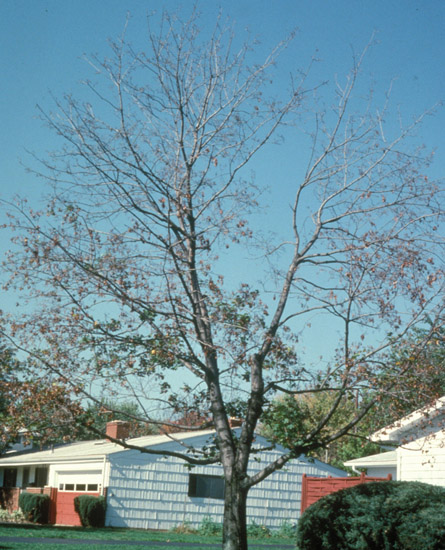Issue 2, April 30, 2010
Tree Declines
As I think over the thousands (or maybe hundreds of thousands) of tree samples I have examined in the last 30 years, clearly clients would prefer to hear that their plant has a solitary problem that can be remedied quickly. Often many problems are present, such as a spruce with Cytospora canker, Rhizosphaera needle cast, and planted on a poorly drained site too close to a home. Even that example provides specific problems that can be addressed.
In far too many cases, however, we see slow reduction in tree growth and vitality of a tree. This may be the result of many stress factors. Often those factors cannot be pinpointed. Sometimes a disease or insect may be involved, but not as the major cause of stress. These situations are known as tree declines. We see white pine decline (discussed in this issue), ash decline, maple decline (image), and oak decline most frequently in Illinois. Because these are not infectious disease situations, there is usually no value in using pesticides. Instead, focus on investigation into the many causes of stress before formulating a management plan. For example, poor site drainage, root rot, high soil pH, and environmental stress such as high soil temperature and wind have been associated with white pine decline. Research the specific needs of a tree species before planting into the appropriate site. Unfortunately, tree declines take years to develop, showing just when trees have become a major part of the landscape.

Some helpful web sites on tree decline are available from our Indiana and Iowa counterparts (Adobe PDF files). --Nancy Pataky
Author:
Nancy Pataky